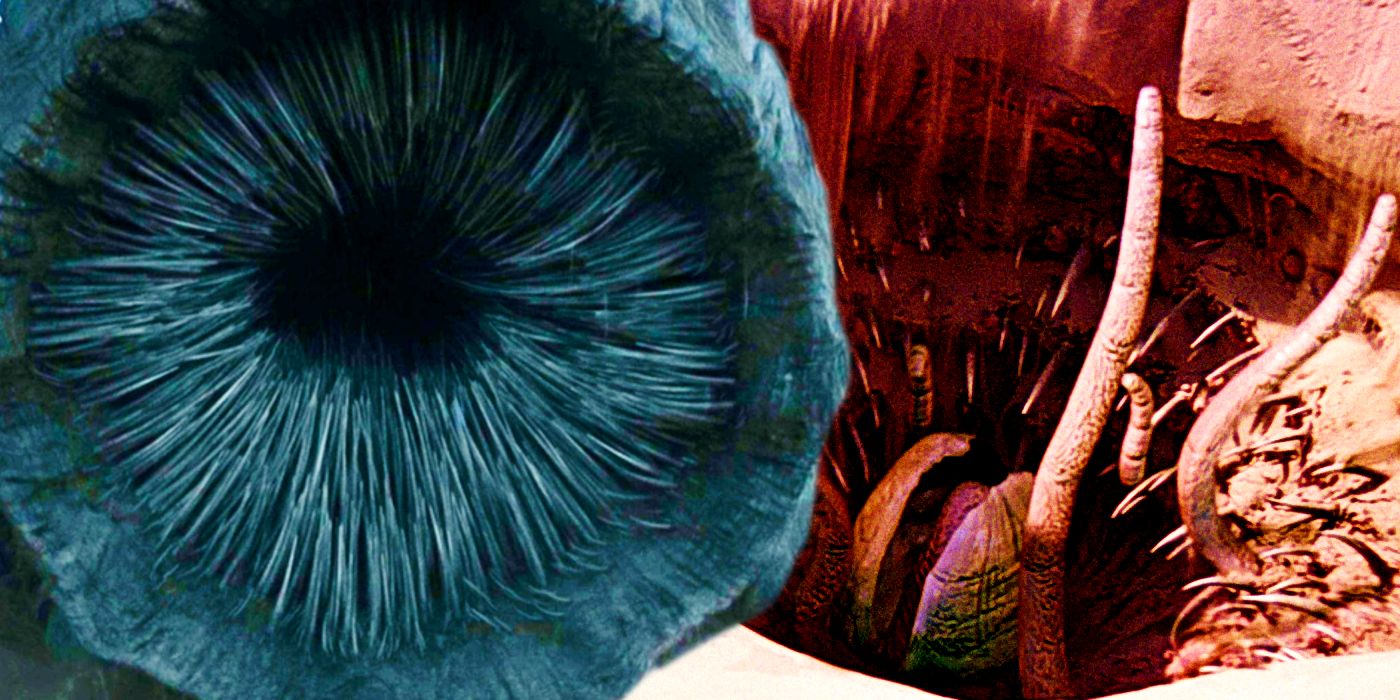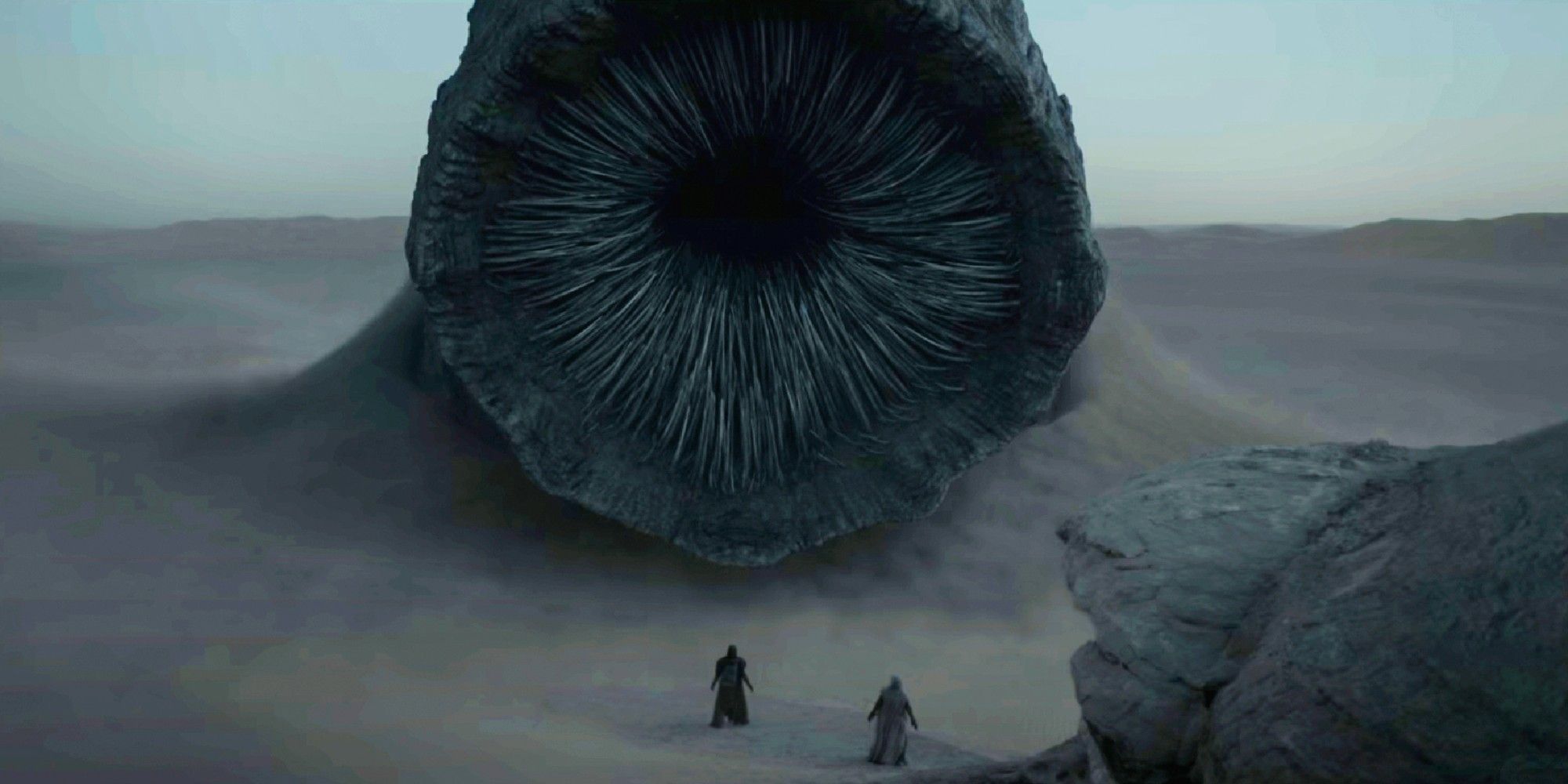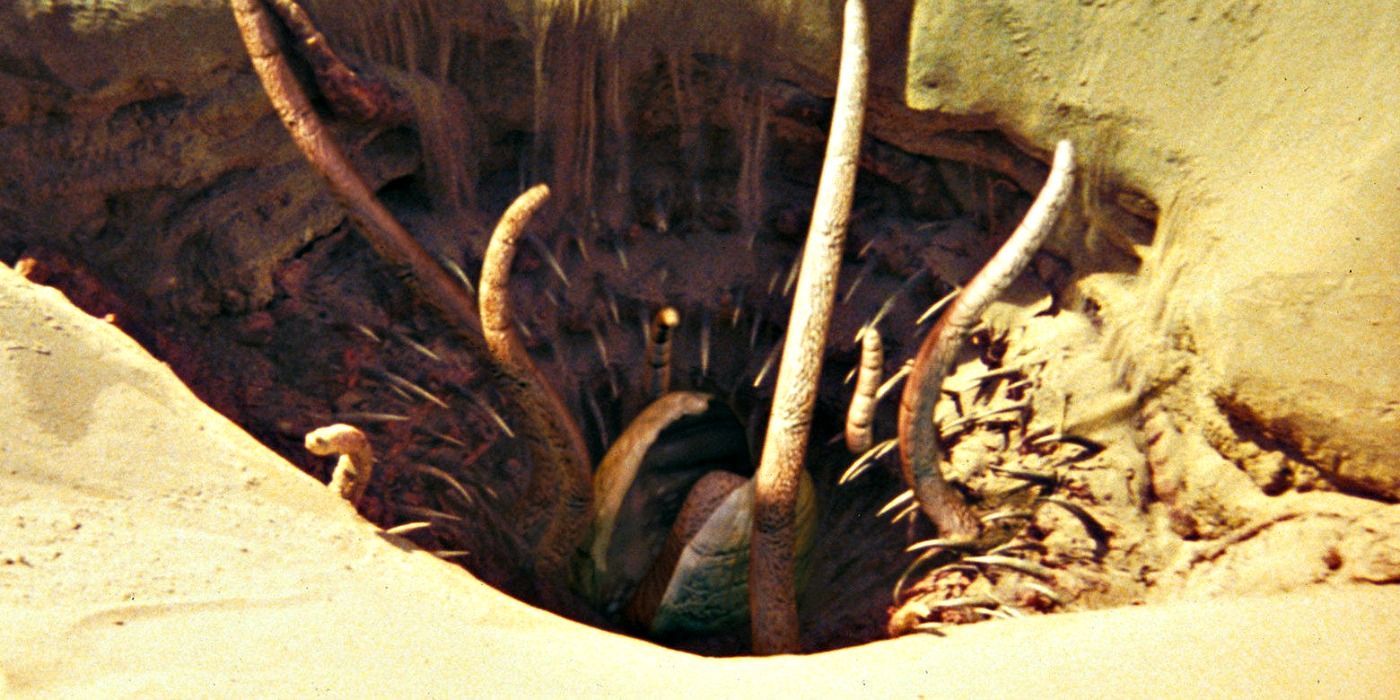How long are Dune's formidable sandworms and how do they compare to Star Wars' Sarlaccs? Denis Villeneuve's Dune, based on Frank Herbert's 1965 novel of the same name, really illustrates how much Star Wars borrowed from the original Dune. To those familiar with how hugely influential Herbert's novel was on later works, it's not a surprise to see how similar Dune's sandworms, or Shai-Hulud as the Fremen people call them, are to the Sarlacc. That said, one creature is decidedly more dangerous than the other.
Dune follows Paul Atreides (Timothée Chalamet) on a coming-of-age journey through the desert landscape of Arrakis. After House Harkonnen attacks House Atreides, who have been relocated to Arrakis by the Emperor to oversee the mining of its spice deposits, Paul and his mother Jessica (Rebecca Ferguson) escape into the unforgiving desert. They must contend with sandworms, the Fremen people, and the harsh climate of this new world. Paul has also been beset by visions of the future, including a Fremen woman named Chani (Zendaya), who gifts him a dagger made out of a sandworm tooth.
Sandworms, like the Sarlacc, are best known for their rows upon rows of dagger-like teeth and their propensity to swallow nearly everything in their path. Unlike the Sarlacc, the sandworms act as guardians of the spice-laden areas of Arrakis and are held in high regard by the Fremen natives. Since they are so sensitive to noise, humans must practice sandwalking, which mimics the movements of smaller animals over the sand, in order to avoid detection. A thumper may also be used to distract the sandworm or lure them in to be captured and ridden through the desert. Sarlaccs may have been based on the sandworms, but there are some notable differences.
How Long Dune's Sandworms Really Are
In every Dune adaptation, sandworms are enormous and imposing. The 2021 version of Dune is perhaps the first to show the truly immense scale of the creature. According to lessons Paul references in the movie, they are the most vicious organisms on the desert planet Arrakis and grow to 400 meters long, or a little more than 1,300 feet. The Dune novel, however, mentions reports of sandworms that surpass 400 meters. During Paul's first run-in with one in the book, he observes that its mouth is easily 80 meters, or 262 feet, in diameter. Later on in the novel, Paul rides a sandworm that seems to be more than a mile and a half long, confirming that they can indeed grow even larger. If Dune's sequel is greenlit, perhaps we will see Paul ride one on the big screen.
How Big & Dangerous Are Dune's Sandworms Compared To Star Wars' Sarlacc
Compared to the sandworms of Dune, the Sarlacc isn't nearly as big or as dangerous. The Ultimate Star Wars compendium has the Sarlacc seen in Star Wars: The Return of the Jedi at around 100 meters long, or a little less than 330 feet. Sandworms, therefore, have at least 300 meters more on the Sarlacc, a difference of over 980 feet minimum. Older Sarlaccs tend to stay in one place with their mouth and tentacles aboveground to catch unsuspecting passersby, while younger ones can move through the sand to hunt their prey. Sarlaccs can also live for tens of thousands of years, unlike sandworms, which are approximated to live up to a few thousand years.
Sandworms are ultimately the fiercest of the two, judging by their speed, sensitivity to sound, and brute force. Sarlaccs are dangerous, but they're not as strong as a krayt dragon, as hinted at in The Mandalorian. Sandworms are the most feared creature in Dune as they will attack anything trespassing on their territory. The sandworm has no issue swallowing a spice Harvester ship whole and the crew has only minutes to evacuate, a testament to the creature's speed. Paul and Jessica learn very quickly how quiet they must be traversing the desert, lest their footfalls attract a nearby sandworm. With a Sarlacc, it's primarily a matter of where a character walks, whereas Dune's sandworms respond to how a character walks, making them the deadlier sci-fi predator.



